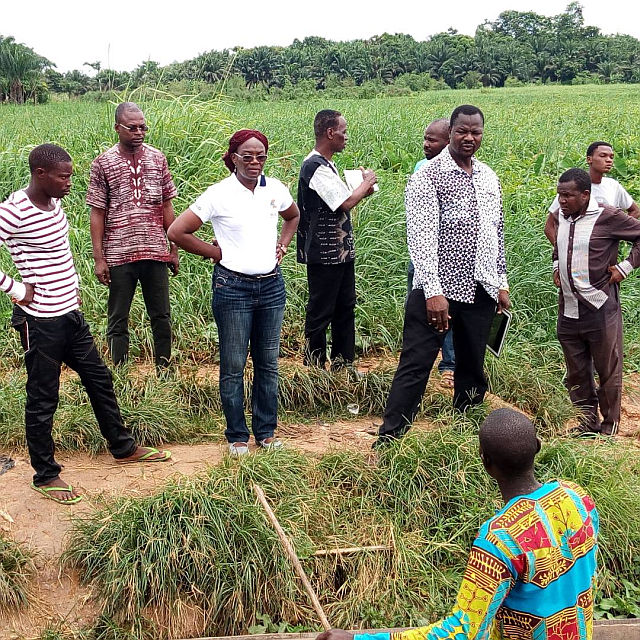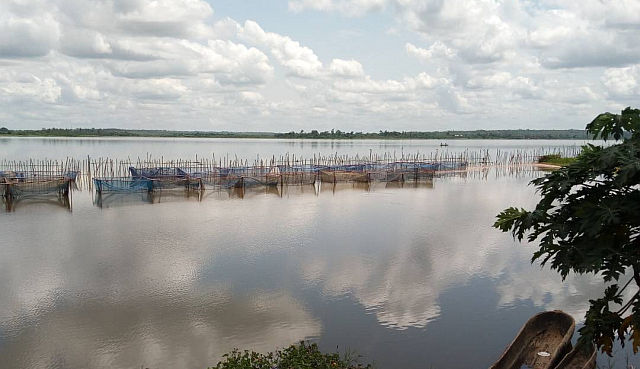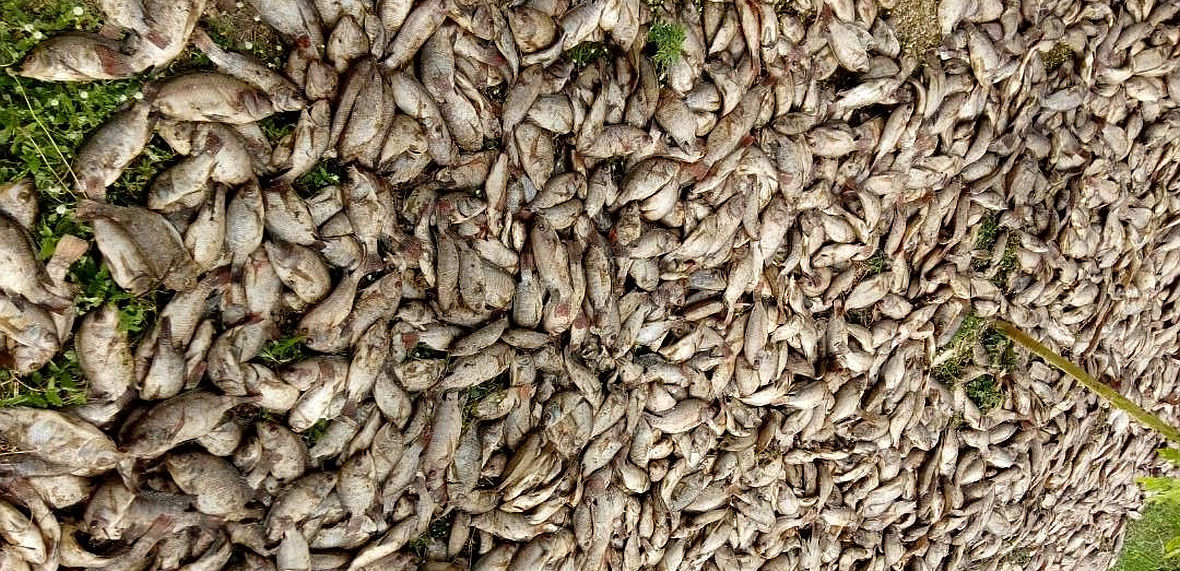A CWP Benin team together with the Director of National Institute of Water (INE) and the Head of the Mono Water Department, visited the site in order to inquire about the state of affairs.
 According to Olivier GAGA, a noxious substance has been discharged into the lake upstream from his operation consisting of about twenty parks in which he raises tilapia. The substance has reached his exploitation causing the death of fish.
According to Olivier GAGA, a noxious substance has been discharged into the lake upstream from his operation consisting of about twenty parks in which he raises tilapia. The substance has reached his exploitation causing the death of fish.
The fish farms, although a private operation, have been installed in the lake bed since 2016 by the promoter who explains that he has received an authorization from the Athieme town hall. For the proponent, this is the first time his farms are undergoing such a tragedy. The nature of the product used, as well as the circumstances remain unknown until now.
According to riparian populations of the lake, this phenomenon of fish death in the lake is not at its first episode, since it occurred in 2012, following a stormy rain. According to them, the high winds that accompany rain cause a high turbidity that leads to asphyxiation in fish. But this time, they recognize that the phenomenon observed is different, because of the coloring of the water.
The Second Deputy Mayor of Athieme, says his municipality has no direct contact with this socio-professional the fishermen who are not organized. One week after the tragedy, the elected officers in the neighborhoods of Kpinnou and surroundings met to discuss the measures to be taken. One of the decisions that emerged was to bring fishermen together in an association to facilitate dialogue. Therefore, market garden production along the shores of the lake will probably be forbidden.
CWP Benin was called upon for collaboration and ask to set up a permanent dialogue framework around the lake.
This case raises a real issue of conflict around the use of the resources of the Lake due to:
- the lack of consultation and dialogue between the various users of the lake;
- ignorance of and lack of information on practices that can harm the resource, leading to water pollution
- economic management of the resource which is inequitable, and
- poor management of water resources.
 CWP to take action
CWP to take action
Faced with this, it is urgent to set up a conflict management mechanism based on the implementation of appropriate tools. This mechanism will be based on roles that will be played by all stakeholders who may be involved in conflict management. This will include:
- identifying all the actors who can intervene (sectoral ministries, users, technical support structures for agricultural activities, local authorities, CWP-Benin);
- Informing all stakeholders about IWRM and its principles through communication and information sessions;
- sensitizing intensively lake users through appropriate means (assembly, local radio, etc.)
- Initiating the establishment of the Local Water Committee (CLE) around this resource.
- researching the nature of the pollutants that can be found in this lake related to the activities carried out in the lake with their degree of impact on the water and biodiversity of the resource. This activity will be carried out by INE
- regularly monitoring the resource. This follow-up will be done with the C/Seau-Mono
- Providing technical support:
a) To fish farm entrepreneurs
b) To market gardeners on the banks of water bodies and streams
c) On the general use of inputs and pesticides in the resource sub-basin.
